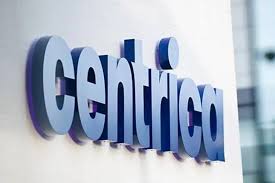For investors with an eye on the property sector, TR Property Investment Trust (TRY.L) presents a fascinating proposition. With a market capitalisation of $1.05 billion, this trust occupies a unique position, even as its financial metrics present a landscape of unknowns. Despite the absence of concrete valuation and performance metrics, the trust’s trading data and recent price movements offer clues about its current market standing.
Currently priced at 332 GBp, TR Property Investment Trust has demonstrated a certain degree of stability, with its price change standing at a negligible 0.50 (0.00%). This steadiness might seem unremarkable at first glance, but it reflects resilience in a market that has seen significant fluctuations. Over the past year, the trust’s price has ranged between 3.24 and 358.50, indicating that it has weathered the highs and lows of the market cycle.
Delving into its technical indicators, the trust’s 50-day moving average stands at 247.24, while the 200-day moving average is at 296.75. These figures suggest that TRY.L is trading above both short-term and long-term averages, which could be indicative of a bullish trend. The Relative Strength Index (RSI) at 63.24 suggests that the trust is approaching overbought territory, yet it remains within a range that typically signals strength rather than warning of an impending downturn.
The trust’s MACD of 41.26, with a signal line at 24.50, further reinforces this positive sentiment. This technical indicator implies that TRY.L is experiencing upward momentum, potentially attracting investors looking for opportunities in the property investment sector.
However, the absence of valuation metrics such as P/E ratios, PEG ratios, and price-to-book ratios leaves investors without traditional measures to assess the trust’s underlying value. This lack of data extends to the trust’s performance metrics, with no available information on revenue growth, net income, earnings per share, or return on equity. Consequently, investors must rely heavily on market trends and technical indicators when considering investments in TRY.L.
Moreover, the dividend yield and payout ratio are also not provided, which means potential income investors do not have insights into the trust’s distribution policies. This lack of transparency in dividend information could be a deterrent for those prioritising income from their investments.
In terms of analyst perspectives, there are no buy, hold, or sell ratings available, and the target price range remains unspecified. This absence of analyst coverage might be seen as a double-edged sword: while it means the trust is off the radar for many, it also opens up opportunities for those willing to conduct their own thorough research.
TR Property Investment Trust navigates through a complex market environment with a degree of price stability that may appeal to those looking for a foothold in property investments. Its technical indicators suggest positive momentum, but the lack of fundamental data necessitates a cautious approach. As ever, investors should weigh the risks and perform due diligence to determine whether TRY.L aligns with their investment strategy and risk tolerance.








































